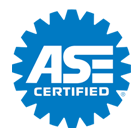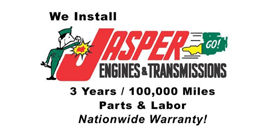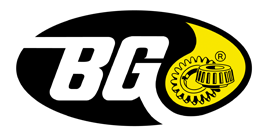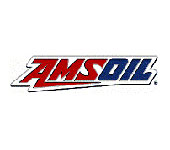AUTONET TV
Archive for January 2021Don't be Fuelish (Signs Fuel Pump is Failing)Posted January 31, 2021 11:01 AMA driver of a large SUV loaded with equipment was heading on a 7-hour work trip when he stopped at a gas station to refuel. When he went to restart his SUV, it turned over but wouldn't catch. Try as he might, he was never able to get it started again. Of course there are many things that can cause those symptoms, but the next day he had his SUV towed to a service repair facility. Using their test equipment, they were able to pinpoint the problem. His fuel pump had failed. The pump, which was located in the fuel tank, had to be replaced, and after awhile he was back on the road, delayed, but happy to be up and running again. What had happened is that the pump was not strong enough to deliver adequate fuel to his engine, vital to being able to start it. It had delivered just enough pressure in the morning to get it started the first time, but it was on its last legs. He had been having trouble starting his SUV in the days leading up to this trip, a clue that something was wrong. The engine relies on a certain pressure of fuel from the pump to run properly, and there are some other signs to be aware of that your fuel pump may need to be replaced. If you are putting strain on your engine, such as going uphill or hauling a big load, and the engine sputters, it may be a sign that the pump isn't delivering that consistent pressure. Another warning sign is if your engine is running hot and then stalls. That could mean your fuel pump is getting weak. Sometimes you might notice your vehicle suddenly speeds up on its own or your fuel economy goes from good to poor in a short time. If your fuel gauge shows you have plenty of fuel in the tank and your engine stalls, that's another possible sign of a failing fuel pump. Technicians have special equipment to see where the fuel problems are, and there are many possibilities. Have your vehicle checked before you're left stranded. Oh, and one more tip to prolong the life of your fuel pump. Since it is cooled and lubricated by the fuel in your tank, make sure you keep at least a quarter of a tank of fuel at all times. Avoid your "low fuel" light going on and you may be helping yourself avoid having to replace your fuel pump. Hill's Auto Repair, Inc. Going (Lug) Nuts (Lug Nut Replacement)Posted January 24, 2021 7:04 AMHere's a part of your vehicle you probably don't think about much: lug nuts. They're what fasten your wheels onto your axles. Pretty important, right? In order to take the wheels off your vehicle to service the brakes, rotate the tires, etc., the lug nuts have to be in good shape so a wrench will grip them tightly. Because lug nuts are on your wheels, they are exposed to all the elements of the road (salt, water, grime) and really take a beating. Unfortunately, some manufacturers have made them out of two different metals. Underneath is the working part of the lug nut, made of steel. On top is the decorative (the "good looking") part, made out of chrome, stainless steel or aluminum. After a while, the steel part begins to corrode and expands. That changes the shape of the outer cap, sometimes rounding off the hexagonal edges and making it hard (if not impossible) to either loosen or tighten the lug nuts since the wrench won't fit any more. The reason that's so important is those lug nuts must be functional, especially if you find you have a flat tire somewhere on the road. If the wheel can't come off to be swapped with a spare, it leaves few options, one of which is your vehicle may have to be towed. All that for corroded lug nuts! When you take your vehicle in for service, the technician who works on it keeps an eye on many things, especially if he or she is removing wheels. It's not unusual for your service advisor to recommend you replace several lug nuts at once since some corrode at a different rate than others. Your repair facility is trying to help you avoid driving a vehicle that has wheels that can't easily be taken off when they need to be. The good news is there are one-piece lug nuts that don't have the problem the two-piece lug nuts have, so replacing them could eliminate that from happening again any time soon. And that's not "nuts" at all. Hill's Auto Repair, Inc. Lean Times (Shocks and Springs)Posted January 17, 2021 7:20 AMYou may have noticed your vehicle going through lean times. By that, we mean it's literally leaning to one side. When you notice that, you should get it checked out at your service facility soon because you could have a serious problem. Many things can cause a vehicle to lean. You may have problems with your struts, shocks or springs. They all work in tandem to make your ride more comfortable. The struts bear the weight of the vehicle's body, the shock absorbers employ a piston that keeps your tires in contact with the road and controls movement of the vehicle's body. Springs also absorb impacts from uneven road surfaces. If these components get stuck, either too high or too low, they cause your vehicle to lean. That's because that side of the vehicle isn't at the height it is designed to be. A technician will determine where the problem is. Outside elements such as moisture plus hard knocks to these components can weaken them, eventually resulting in a failure. The metal can get so fatigued that it breaks. Often when one side of a vehicle is too high or too low, your service advisor will advise you to have the other side done as well. That's because if only one side has new parts installed, it won't be level with the side that has old parts. There are a couple of other reasons vehicles can lean. One is that the suspension can be bent or the chassis twisted, again due to wear and tear by driving on rough roads, over badly maintained railroad tracks or in deep potholes. Another reason your vehicle may lean is that the tires and/or wheels aren't all the same size. Or one side might have drastically over or underinflated tires. This can be a dangerous condition since the imbalance can affect steering and handling. Considering what drivers put suspension parts, tires and wheels through, it's not surprising that they can be punished so much that they don't hold up like we want them to. A level-headed driver will make sure to be driving a level vehicle by making sure these components are maintained in good condition. Hill's Auto Repair, Inc. How to Radiate Cool (Radiator Care)Posted January 10, 2021 7:25 AMThere's nothing that radiates cool like a vehicle radiator that's helping to keep your engine running at the proper temperature. You don't have to baby it, but you can't simply ignore it, either. Let's take a quick dive under the hood to let you know what the radiator is doing. It takes the heat your engine produces and moves that heat outside. It's not an easy job and heat is an engine's number one enemy. Now that you're thinking how nice you want to be to your radiator, we have a couple of ideas how you can take care of it. The easiest thing is to pay attention to your vehicle's temperature gauge. If it gets in the "too hot" or "not hot enough" range, have it checked out soon. Make sure your coolant is kept at the correct level and if you see a trend that you have to add coolant more than a couple of times a year, you might have a leak. Even if there are no obvious problems, every couple of years or so, consider taking your vehicle in for radiator maintenance. A technician can run a pressure check for leaks and ensure that the thermostat and radiator cap are working correctly. The technician will check that fans are running like they should so they can move air over the radiator and heat away from the coolant inside. Ask your service advisor when you should have your radiator flushed and coolant replaced according to the manufacturer's recommended intervals. In addition to cooling, coolant has corrosion inhibitors which stop working after a while. Without those corrosion inhibitors, the inside of your radiator can literally start rotting away. Keep in mind that the coolant level must be kept at manufacturer's specifications since if those corrosion-preventing chemicals aren't touching the metal, they're not preventing corrosion. Different vehicles use different coolants, so your service facility will make sure yours is getting the correct one. Keep your coolant system happy and one day, maybe you can order up a custom license plate, "RAY-D-8." Hill's Auto Repair, Inc. The Light Nobody Wants to See (Check Engine Light)Posted January 3, 2021 10:26 AMYou've probably had your Check Engine Light go on. Then it goes off and you figure, hey, whatever the problem was, it's gone now and I don't have to worry about it. Well, the problem may have gone away and it may not have. Your vehicle likely has one of these warning lights on the instrument panel: an amber light that looks like an engine or reads "Check Engine" or "Service Vehicle Soon." If that light comes on and stays on, it usually means there's something amiss but not urgently in need of service. (Now if it's blinking, that's another story that we'll deal with in a minute.) Sometimes when it comes on and stays steadily lit, the problem will go away and the light will go out. Sometimes it will stay on until you get the problem fixed. Either way, the engine's computer will store a code that can provide clues to what's not working—or wasn't working—the way it's supposed to. If you are just dying to know what that code is, you can buy a little code reader or take your vehicle to an auto parts store and they'll read it. Problem is, the code offers so many options that unless you are a trained technician, you probably won't have a clue what those codes mean. So if you want to be sure, take it to your vehicle repair facility and have them check it. Technicians are trained to decipher the codes and, using their experience and other diagnostic equipment, can get to the root of the problem and fix it. As we mentioned before, if that Check Engine light comes on and is blinking, it means a more serious engine malfunction that can damage expensive components such as the catalytic converter and even the engine itself. It's important to have that checked by a professional as soon as possible. Hill's Auto Repair, Inc. Something to Latch On To (Hood Latch Safety)Posted January 1, 2021 9:27 AMThe other day, a driver was trying to open his vehicle's hood so he could add some windshield washer fluid. But when he pulled the hood release inside the car, nothing happened. Usually, opening any hood is a 2-step process. You pull the hood release (which is usually a handle under the dashboard to the left of the steering column) and listen for the hood to pop up slightly. (It doesn't open all the way because it has a safety latch to prevent you from accidentally opening it up while you're driving.) Then, you get out and find the latch, usually through the grille near the hood. There's a little handle on it which you push, slide or pull (there are a few different types) at which point the hood can be opened up all the way. But in this driver's case, the hood would not release at all when he pulled the handle inside. Not knowing what to do, he called his service advisor, who told him to bring it over. The reason? A hood with a broken latch could be a safety hazard since it is possible it's not securely closed. And in this condition, it's possible for the hood to suddenly release while you are driving, obscuring your view of the road. Latch issues can be caused by many things, perhaps a broken cable between the hood release and the latch. It's possible that cable just detached or frayed after being opened so many times. If a hood release cable isn't kept lubricated, it can corrode and just lock up. In this driver's case, the cable had corroded and broken, so it had to be replaced. Unfortunately, many times you won't know you have a problem with your hood latch until one time you pull it and it breaks without warning. When your vehicle is in for routine maintenance like an oil change, a technician will often keep an eye out for signs that your hood latch needs attention so you don't get "locked" out of your engine compartment. Hill's Auto Repair, Inc. | ||
SearchArchiveSeptember 2011 (18)October 2011 (3) November 2011 (5) December 2011 (4) January 2012 (5) February 2012 (3) March 2012 (5) April 2012 (4) May 2012 (5) June 2012 (4) July 2012 (4) August 2012 (5) September 2012 (4) October 2012 (5) November 2012 (4) December 2012 (4) January 2013 (4) February 2013 (4) March 2013 (4) April 2013 (4) May 2013 (5) June 2013 (4) July 2013 (4) August 2013 (4) September 2013 (5) October 2013 (5) November 2013 (4) December 2013 (4) January 2014 (5) February 2014 (4) March 2014 (4) April 2014 (4) May 2014 (5) June 2014 (4) July 2014 (4) August 2014 (5) September 2014 (4) October 2014 (5) November 2014 (4) December 2014 (5) January 2015 (4) February 2015 (4) March 2015 (4) April 2015 (5) May 2015 (2) June 2015 (6) July 2015 (4) August 2015 (5) September 2015 (4) October 2015 (5) November 2015 (4) December 2015 (3) February 2016 (1) March 2016 (7) April 2016 (4) May 2016 (5) June 2016 (4) July 2016 (5) August 2016 (4) September 2016 (4) October 2016 (4) November 2016 (5) December 2016 (4) January 2017 (5) February 2017 (3) March 2017 (5) April 2017 (4) May 2017 (5) June 2017 (4) July 2017 (5) August 2017 (3) September 2017 (3) October 2017 (5) November 2017 (4) December 2017 (3) January 2018 (5) February 2018 (4) March 2018 (4) April 2018 (4) May 2018 (5) June 2018 (4) July 2018 (5) August 2018 (4) September 2018 (4) October 2018 (4) November 2018 (4) December 2018 (5) January 2019 (5) February 2019 (1) March 2019 (4) May 2019 (2) June 2019 (5) July 2019 (2) August 2019 (2) September 2019 (3) October 2019 (5) November 2019 (4) December 2019 (5) January 2020 (5) February 2020 (4) March 2020 (5) April 2020 (1) May 2020 (2) June 2020 (1) July 2020 (1) August 2020 (5) September 2020 (4) October 2020 (4) November 2020 (5) December 2020 (4) January 2021 (6) February 2021 (4) March 2021 (4) April 2021 (4) May 2021 (5) June 2021 (4) July 2021 (4) August 2021 (5) September 2021 (4) October 2021 (5) November 2021 (4) December 2021 (4) January 2022 (6) February 2022 (4) March 2022 (4) April 2022 (4) May 2022 (5) June 2022 (4) July 2022 (5) August 2022 (2) September 2022 (4) October 2022 (5) November 2022 (4) December 2022 (4) January 2023 (5) February 2023 (4) March 2023 (4) April 2023 (5) May 2023 (4) June 2023 (4) July 2023 (5) August 2023 (4) September 2023 (2) October 2023 (1) January 2024 (1) February 2024 (4) | CategoriesTires and Wheels (42)Maintenance (59)Warranty (2)Fuel System (48)Exhaust (12)Differential Service (4)Cabin Air Filter (8)Air Conditioning (17)Steering (16)Fluids (17)Cooling System (19)Shocks & Struts (11)Trip Inspection (4)Brakes (22)Older Vehicles (4)Service Intervals (10)Alignment (16)Monitoring System (3)Dashboard (3)Inspection (10)Service Standards (13)Windshield Wipers (9)Parts (8)Transmission (11)Drive Train (9)Safety (6)Timing Belt (6)Battery (20)Automotive News (8)Tire Rotation and Balancing (4)Headlamps (6)Diagnostics (5)Diesel Maintenance (2)Engine Air Filter (2)Suspension (3)Winter Prep (7)Keys to a long lasting vehicle (4)Fuel Economy (10)Auto Safety (6)Serpentine Belt (6)Alternator (6)Emergency Items (1)Check Engine Light (6)What Customers Should Know (81)Fuel Saving Tip: Slow Down (2)Wheel Bearings (1)Customer Detective Work (1)Oil Change (7)Safe Driving (1)Tires (10)Water Pump (1)Winter Tires (1)Spark Plugs (2)TPMS (3)Brake Service (4)Fuel Pump (1)PCV Valve (2)Transfer Case Service (1)Shocks and Struts (1) | |










